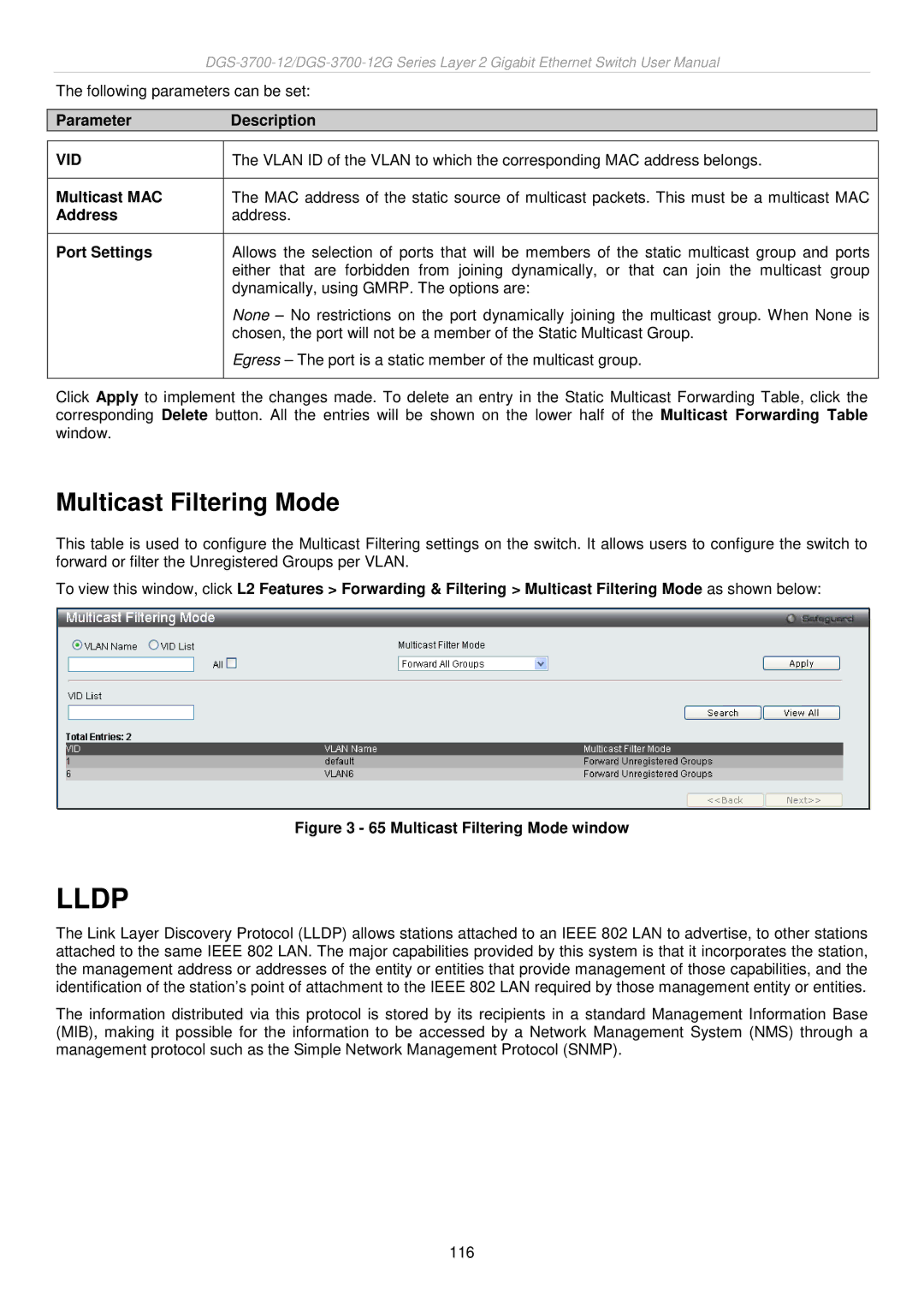
The following parameters can be set:
ParameterDescription
VID | The VLAN ID of the VLAN to which the corresponding MAC address belongs. |
|
|
Multicast MAC | The MAC address of the static source of multicast packets. This must be a multicast MAC |
Address | address. |
|
|
Port Settings | Allows the selection of ports that will be members of the static multicast group and ports |
| either that are forbidden from joining dynamically, or that can join the multicast group |
| dynamically, using GMRP. The options are: |
| None – No restrictions on the port dynamically joining the multicast group. When None is |
| chosen, the port will not be a member of the Static Multicast Group. |
| Egress – The port is a static member of the multicast group. |
|
|
Click Apply to implement the changes made. To delete an entry in the Static Multicast Forwarding Table, click the corresponding Delete button. All the entries will be shown on the lower half of the Multicast Forwarding Table window.
Multicast Filtering Mode
This table is used to configure the Multicast Filtering settings on the switch. It allows users to configure the switch to forward or filter the Unregistered Groups per VLAN.
To view this window, click L2 Features > Forwarding & Filtering > Multicast Filtering Mode as shown below:
Figure 3 - 65 Multicast Filtering Mode window
LLDP
The Link Layer Discovery Protocol (LLDP) allows stations attached to an IEEE 802 LAN to advertise, to other stations attached to the same IEEE 802 LAN. The major capabilities provided by this system is that it incorporates the station, the management address or addresses of the entity or entities that provide management of those capabilities, and the identification of the station’s point of attachment to the IEEE 802 LAN required by those management entity or entities.
The information distributed via this protocol is stored by its recipients in a standard Management Information Base (MIB), making it possible for the information to be accessed by a Network Management System (NMS) through a management protocol such as the Simple Network Management Protocol (SNMP).
